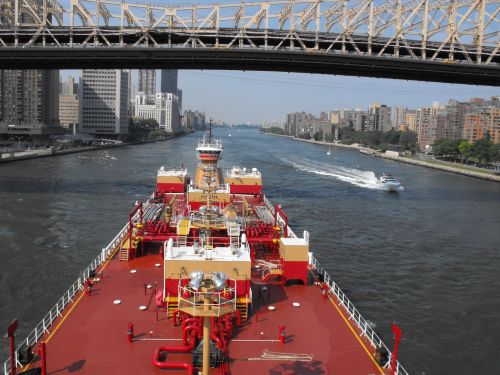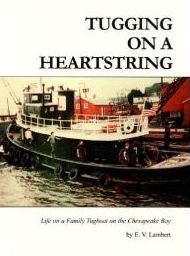SAFER SEAS-11.01.2018The latest NTSB document on vessel casualty investigations delivers insights into the chain of errors that result in the bad things happening. Read, explore and appreciate the observations made and the cost of these error chains.
Archive for the ‘general seamanship’ Category
The NTSB Report, 1 Nov 2018
Posted in education, general seamanship, informational on November 11, 2018| 2 Comments »
Why should L.O.R.A.N.’s demise change how you navigate?
Posted in AIS, education, general seamanship, informational, marine safety, nav aids, opinion, training on March 13, 2010| 1 Comment »
It’s old news now, for all intents and purposes L.O.R.A.N. is dead. Aside from the arguments for or against shutting down the system, it’s fait accompli, the deed is pretty well done.
I’ve read the articles filled with the hand wringing and gnashing teeth of how the system should be left in place as a back-up in case of whatever….hey waitaminit, what “backed up” L.O.R.A.N.? Should we set up radio beacons again and fire up the old R.D.F.? Have you seen a working R.D.F. on anything afloat besides a vintage Russian Spy Ship lately?
In fact, most coastal charts don’t have the grid anymore unless it’s a special order or an antique. If you still have a L.O.R.A.N., how often have you used it since adding G.P.S.? I haven’t seen a L.O.R.A.N. unit aboard for at least 8 years, I don’t miss it. It was easy enough to use the TD’s but once G.P.S. was in the game it was the hands down winner. Yes we depend on it, yes we move bigger stuff with closer tolerances, it was a natural progression.
Could it be that our chart-plotters and all the sophisticated A.I.S. coupled devices we use are now one solar flare, a spilled cup of coffee, or government whim away from non-existence?
Is it possible that our navigation technology, so intimately wrapped up in those tidy little G.P.S. receivers, may fail or be taken away at the worst possible moment? Well duh… that’s always been true, as with any electronic aid. We’ve talked about this before.
You’re not supposed to be relying on any one aid for navigation, no matter how slick it is. The nav-discipline you exercise while underway should use everything at your fingertips. Some more than others, but none more than your ability to recognize the limitations of each tool. When it comes to your piloting discipline, no battery back-up or antenna is required.
You need an up-to-date chart, a decent stabilized radar, a good grasp of D.R. plotting, and a sharp pencil. Plotting D.R.’s and detailed voyage planning are just prudent procedures. Professionals prepare a full fledged voyage plan. The voyage plan by definition is a working document and it is adjusted as the voyage progresses.
The idea of plodding ahead without keeping track of where I’ve been and where I expect to be has not entered the equation since detailed voyage planning has been made part of our operational procedures. Whether I put a mark on the chart or make a note, there is a record of where I’ve been within the last 30 minutes to refer to. Be it a landmark, bearing and distance, L.O.P., or radar range and bearing.
Sooner or later, something will stop working as it should, and even if every layer of “e-redundancy” fails, one can still have enough recent data to discern a decent estimated position when all of the e-toys fail.
It’s easy to be lulled into a false sense of security when you’ve got the magic box telling you what you want to hear, even when your eyes would tell a different story. With electronics, chart plotters, and A.I.S. in agreement, few would doubt their position, but we shouldn’t be missing that healthy dose of skepticism. Scanning the instruments and looking out the window are practices hard-linked to safe navigation especially while piloting. To rely completely on any one tool means you’re shit out of luck when that tool fails.
Devices go out of whack for the strangest and sometimes the simplest reasons. The story and subsequent investigation of the cruise ship Royal Majesty’s grounding on Rose and Crown Shoal off Nantucket was reported to be partly the result of the navigation officers assuming their electronic information was gospel. That assumption contributed to the events that turned a routine trip into a nightmare. Among the critical things they missed was the alarm on the master G.P.S. unit indicating that it had switched to D.R. Mode (due to a faulty antenna). Even with a L.O.R.A.N. unit (which they apparently ignored) integrated into their navigation suite, they went aground 17nm off course. Okay, so they weren’t piloting, but they had an operational L.O.R.A.N. and didn’t recognize their navigation error until they were making lobster salad on Rose and Crown. A couple of L-plots may have clued someone in.
“Things to consider“:
1. Fathometers:
While stopped with no way on, a fathometer will only tell you what’s under the transducer at that moment, add a few knots of speed and you’ll be able to identify a trend (shoaling or deepening), but prop-wash turbulence from another vessel (or your own), or choppy seas can obscure accurate readings. Fathometers generally display the depth under the keel as the default display.
2. A.I.S.:
An A.I.S. transponder can and will display incorrect data if it hasn’t been set up or updated properly. There’s no way to be certain the transmitted A.I.S. data is correct unless you confirm it the old fashioned way, plot it. Determining a C.P.A. using only A.I.S. data is a fool’s errand.
3. G.P.S. Chartplotters:
Chart plotters rely on static data for charts(vector or raster) and some can be updated online with the latest corrections, but even if you have a “state of the art” device, your chart plotter may not reflect the most up to date bouyage or navigation information. It isn’t gospel…..and we all know how Windows based systems can be, shall we say, fickle.
4. Radar:
Radar is a simple concept of reflection. It is still in use as a critical and necessary tool while R.D.F.’s, Omega, and L.O.R.A.N. (both A and C) have fallen by the wayside. It’s limitations are mostly related to signal attenuation, clutter caused by sea-state, precipitation, or user error. Since radar is a “line of sight” device, it’s limited by it’s geographic horizon. The biggest problem with Radar is mis-interpretation of the data presented, that’s why we’re required the radar course for our licenses. See Big Bayou Canout. See Andrea Doria.
Radar navigation is more than just plotting vectors for collision avoidance and identifying landmarks by their profile, it’s a skill that backs up our piloting and position fixing. I can honestly say that for my work, collision avoidance plotting on paper is way down the list as far as how I use radar in my “day-to-day”.
Targets can be missed if they are low to the water, have non-metal reflective surfaces, or are over the horizon. The distinction of this device is that it updates with every swing of the scanner, BUT unless you are stopped and making no way, it tells you where you were, not where you are.
For coastal navigation and inland piloting, radar fixes are useful tools and are not dependent on anything except the skill of the operator, a gyro compass, and the power supply. A stabilized display that produces a bearing line using the E.B.L. function (electronic bearing line) is a tried and true method of taking bearings. Two good bearings to fixed objects ashore at or near 90 degrees apart = a fix. No G.P.S. info or pelorus is necessary.
A radar fix generated by taking a range and bearing to a known fixed object (lighthouse, beacon, point of land, or dock) or swinging a couple of arcs using the V.R.M. gives us a pretty accurate indication as to where we are. From that point (rfix) we can lay off our planned course and speed on the chart and have a reliable graphic representation of our position in relation to all around us. Plotting using this method is a solid means of position fixing. But it’s only good at the moment of the fix, introduce any change and it isn’t accurate any longer. Those changes include but are not limited to, speed of advance, changes in current, wind direction, and time. After that it’s a D.R Plot until the next fix.
Parallel indexing is another, frequently overlooked function of modern radar. It’s a simple method of determining the “set” on or off a coast or hazard. It enables a quick visual reference to the user without making any calculations, if a target or hazard is inside the index line, we’re closing, outside we’re falling away.

Radar may not be as sophisticated as the new plotters and it takes practice, but it’s a good basic tool. I regularly deal with multiple targets, large and small, going at different speeds and courses in close quarters. Sometimes one needs to be a bit clairvoyant in order to make any sense out of what is on the screen and what those targets have in mind. It’s up to me to know, as best as I can, where I am and what I can do to avoid getting too “up close and personal”. The best defense I can have is using every device I have at hand along with a good pair of eyes and the sense to use them.
Using radar as a position fixing aid should be a regular part of the nav-watch’s procedures. When you have the luxury of taking a certain route regularly, the picture on the display becomes familiar enough to pick out subtle differences between the buoys, shoreline, and potential traffic.
I’m aware that at any moment my boat or the one I’m approaching could suffer an equipment failure that will impact my decisions. Maintaining one’s situational awareness includes keeping a solid “plan b” in mind.
5. E.C.D.I.S. (Electronic Chart Display Information Systems)
For the most part, these devices are on ships rather than tugs due to their high price. They’re supposed to be the ultimate in “networked navigation devices”. Radar, A.I.S., G.P.S., fathometer, chart-plotter, A.R.P.A and more, are all rolled into one. If there are two complete and independent installations on board, the vessel can sail without a paper chart catalog. The database can be updated with the click of a mouse, but it’s still something that needs to be treated with a grain of salt.
And if one needed any more proof, the fallability of electronic aids is illustrated quite well by a notice published by the I.H.O. The way chart displays used in E.C.D.I.S. are encoded has been determined to have an error that could cause grave consequences. The depth contours on some charts are improperly encoded making certain hazards invisible (specifically depth contours), prompting NOAA to insist users use the “all data” setting during their planning and monitoring of voyages. The entire catalog will now be inspected for more of the same. The sexiest technology can bite you on the ass even if you’re following proper and professional procedures. It pays to remember the basics.
So the issue that G.P.S. is a lot of eggs in one basket, yeah I get that, but we should be keenly aware it’s only a small part of the array of devices and skills we have at hand whenever we get underway. Being aware of the consequences of relying too heavily on any one aid and backing up navigation procedures with good basic practices will always serve you well.














